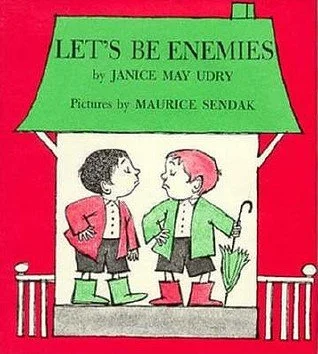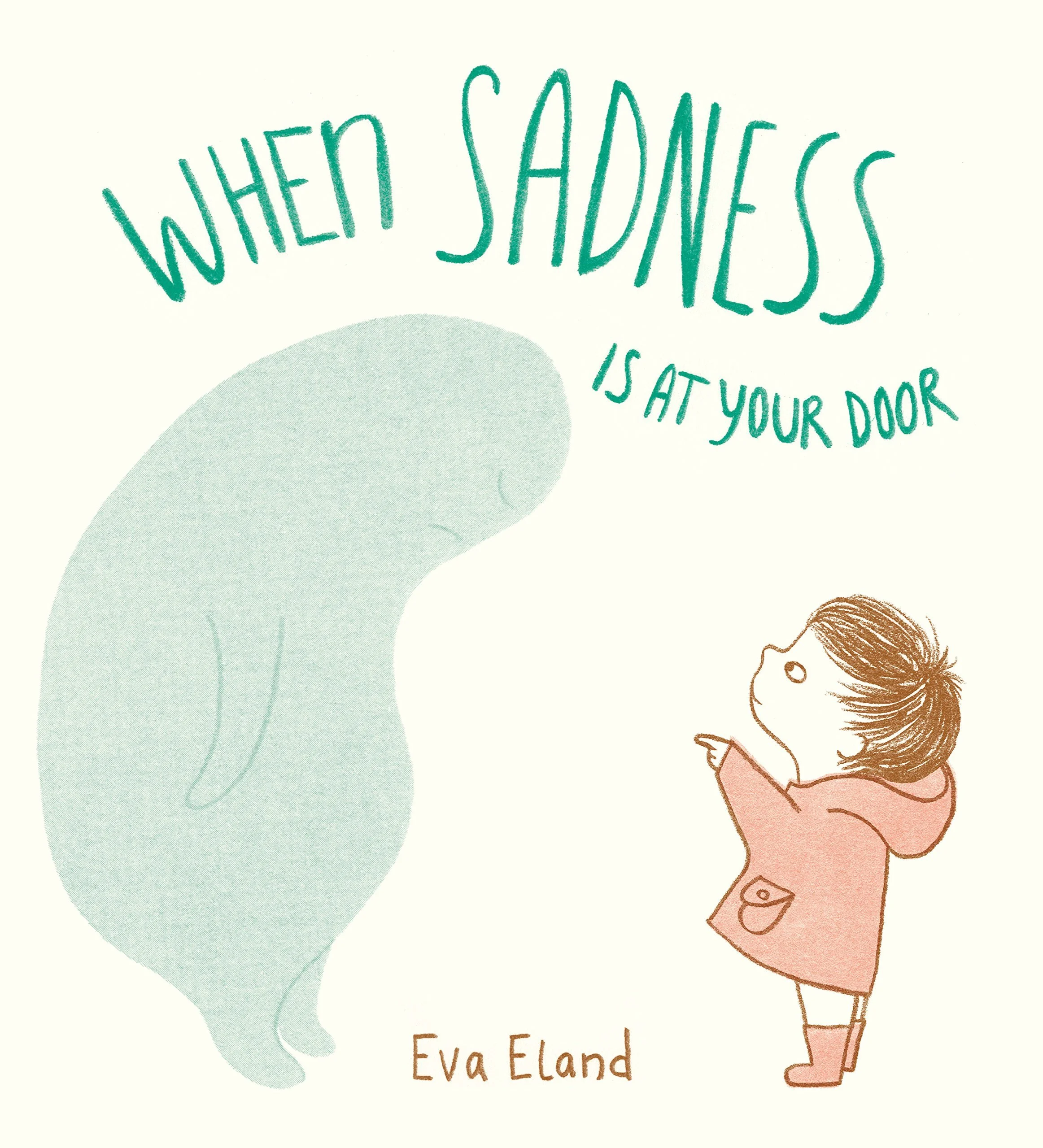Three Books on Enemies and Friends
Is it possible there is the tiniest crack letting the light in? Let us hope so. Why do we seem to turn our most beloveds into our enemies? Is it our lack of practice with nuance in this moment of polarization? Is it the thingification of capitalism turning everyone into objects that we either consume or reject? In any event, here are three books in praise of ambiguity that remind us that enemies are our closest and most beloved friends in ways both personal and political.
Felix and the Monsters
In this time of ongoing and intensifying white supremacy, we urgently need picturebooks books that refuse racist narratives that cast borders as necessary walls and difference as threatening. Enter Felix and the Monsters, which harkened me back to that shadow-side day after Trump was elected and I was driving home to CBC listening to racist white schoolchildren chant “build a wall, build a wall” to their Latinx peers in a school somewhere in the Midwest. We urgently need antiracist education for our children, and this book does a skillful job. This book features Felix, who is a border guard, but who wants to be a musician. He wants to jam with someone/anyone (!), but his fellow guards keeping turning him down: “We’re here to guard! That’s what we have always done, and what we will always do. If you have a problem with that, maybe you need a different job!” However, the truth is, Felix doesn’t want to be a guard. He wants to play his keytar. And truly, aren’t we all sick of this situation? How long are we going to keep hoarding stuff and sowing division so that those at the top can prosper? Walking down Bank St. with my youngest son this week, trying to explain to him why some people don’t have homes, I felt like giving up. Why is the work of parenting not more often understood as urgently needing a feminist politics? When my youngest was a baby, I remember feeling torn between attending a climate protest or spending some time with my baby. This might be described as the false choice of caring for the world or caring for my son. Does he not live in the world? Does the world not live in him? In any event, playing a moody song on his keytar, Felix is swept away by “one of the most epic solos ever” when he hears a “thrum thrum thrum” coming from the other side of the wall. It’s a little monster named Dot, and she has been lured there by the sounds of Felix’s moody keytar. Felix follows her up and over the wall, and meets Dot’s musician friends, starting an epic jam session.
Eventually Felix’s guard friends follow him, sure that Felix has been monster-napped. Upon discovering that Felix and Dot are just caught up in jamming, they realize their error, and they all summarily decide to take apart the wall. As easy as that. And it could be. In my other life I teach prison abolition among other things, and I remember a student of mine saying “but we must put people behind bars” and then stopping, and saying “I guess we don't actually to.” This book gets at to me what is a deep truth about the world. We built these walls, and just as easily, we could tear them down. We could tear them down tomorrow and live in a better world. Children’s books speak to so many of us so deeply because they answer some of our most profound yearnings, what my friend Suzanne once described to me as the “beautiful dream that has not yet come true.” Felix and the Monsters helps us to imagine what the world might look like if our beautiful dreams came true in this lifetime. What a dramatization of the fierce urgency of now: the need to tear down the walls.
Let’s Be Enemies
Many years (and more than one partner ago), I sat in an epic couples counselling session complaining about my erstwhile girlfriend. Why was she so last minute? Could we never plan? Did everything have to be done by the seat of our pants? Though I don’t remember much else about that session, I do remember the therapist saying: “isn’t it interesting, you were drawn to her spontaneity and sense of fun, and now these very same qualities are driving you wild. It’s often like that, the things that attract us initially, subsequently drive us away.” Huh. What a drag. Why are humans such contradictory creatures? In any event, if ever there was a children’s book to dramatize this deep psychological truth, it’s the 1966 version of Let’s Be Enemies that my incredible mother kept for me all these years, written by Janice May Udry and illustrated by Maurice Sendak of Where the Wild Things Are. Beginning with “James used to be my friend. But today he is my enemy,” the small hero of this book, John, talks *a lot* about how difficult it is to get along with one another. In a spare children’s version of "l’enfer c’est les autres," John explains all of James’ many annoying qualities. Witness this: James always wants to carry the flag, James hoards all the crayons, and that outrage of childhood that I personally feel never goes away, James “always wants to be boss.” The little boy at the heart of this story is heading over to tell James just what he thinks, and in doing so, remembers a lot of fun times. They were such good friends that they even had “the chicken pox together,” but, John tells us, “I wouldn’t have the chicken pox with James now.” When he gets to James’ house, he announces he is no longer James's friend. Unsurprisingly James replies: “Well then, I’m not your friend either.” All right! But then, in that moment of profound contradiction that so many of us have experienced, the moment that I always think of in a romantic relationship as “I told you to leave! Where are you going?” John has second thoughts.
Hey James.
What.
Let’s roller skate.
Ok. Have a pretzel John.
Oh, but that could we see more conflict in this light. Yes, of course, the people we love drive us crazy. Friendships and relationships should and do end. And yet simultaneously, there you have it. We still all have to roller skate together.
Recently, while I was ordering him through his bedtime routine, my youngest son said to me “don’t you ever get tired of being so bossy mummy?” No, I told him, it seems I never do. But enemy though I was, he seemed to forgive me. “Mummy,” he told me, “even though you’re the worst, I still love you.” And really, that’s probably as good as it gets.
When Sadness is At Your Door
Making friends with sadness! So challenging. The research clearly shows that most people would rather feel angry than sad. Bizarrely, as Rebecca Solnit puts it, “feeling angry makes people as optimistic about the outcome of a situation as feeling happy”. Sadness does not make us feel optimistic, it makes us feel frightened and bad and alone. How many people have I spoken with who have told me, "I can’t cry, because I’m afraid if I let myself feel as bad as I actually do, I’ll never stop." And yet, perversely, although sadness may feel like an enemy, the only way around it is through it. Like the tunnel analogy that my amazing caregiver told me about, our emotions are like trains in a tunnel. There is no backing up, there is turning around, often the only way through an emotional sadness tunnel is through it. (For more on this analogy, see this: https://pickanytwo.net/the-train-analogy-that-will-change-how-you-see-your-crying-child/). When Sadness is At Your Door is brief, spare, and beautifully illustrates how we might treat sadness gently and with care. What might it be like if we treated sadness like a treasured friend rather than an enemy? The book begins “Sometimes Sadness arrives unexpectedly. It follows you around…and sits so close to you, you can hardly breathe.” Who hasn’t felt this way, the crushing, frightening weight of sadness on their chest, and who hasn’t felt this way so much more than usual during the last very complicated year? And yet as this book shows, the more you try to push sadness away, the bigger it grows. Instead, we are called on to befriend sadness: “Try not to be afraid of sadness. Give it a name. Listen to it. Ask where it comes from and what it needs.” Asking us not to rail against sadness with frenetic activity, instead this books asks that “If you don’t understand each other, just sit together and be quiet for a while” or try an activity that you both enjoy, like drawing, listening to music, or drinking hot chocolate.… And of course, this book reminds us, that if we can make space, maybe sadness will recede. When Sadness is At Your Door invites us all to remember to sit with our feelings. How many times have I had to tell myself, nobody ever died from feeling uncomfortable. Sadly, there is no shortcut to grief.
(If you are looking for material for teenagers or adults on depression, I highly recommend Hyperbole and a Half, which a lovely friend gave me upon my own sadness. Part I is found here, part II found here. (Thanks Jena!)


